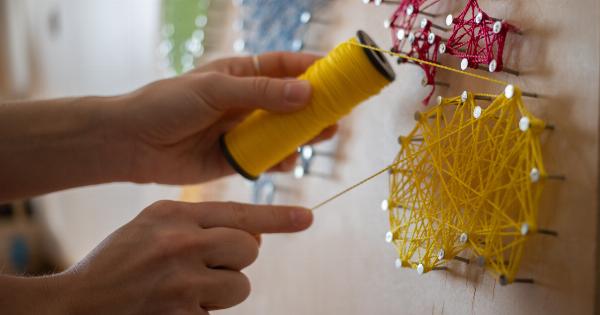Our nails are not just for decoration; they can also provide valuable insights into our health. Paying attention to the lines on your nails can help you identify potential underlying health issues.
Nail lines, sometimes called nail ridges or nail striations, come in various forms and can indicate different conditions or deficiencies in your body. Let’s explore what these lines signify and what you should look out for.
1. Horizontal Lines on Nails (Beau’s lines)
Horizontal lines on your nails, known as Beau’s lines, are typically a sign of a temporary disruption in the growth of your nails. These lines can be caused by various factors, including:.
- Severe illnesses or high fevers
- Malnutrition or nutrient deficiencies
- Injury to the nail or nail bed
- Chemotherapy
- Psoriasis or other skin conditions
If you notice these lines on your nails, it’s essential to monitor them. If they persist or worsen, consult a healthcare professional to determine the underlying cause.
2. Vertical Lines on Nails (Longitudinal ridges)
Unlike horizontal lines, vertical lines on your nails, called longitudinal ridges, are usually a natural part of the aging process. These ridges are not particularly concerning and are more common as you get older.
However, in some cases, they may indicate an underlying health issue, such as:.
- Iron deficiency
- Poor circulation
- Dehydration
- Autoimmune disorders
While vertical lines are generally harmless, sudden changes or the appearance of multiple deep ridges may warrant a consultation with a healthcare professional.
3. White Lines on Nails
White lines appearing on your nails, known as Muehrcke’s lines, often indicate low protein levels in your body. These lines usually run horizontally across the nail and remain even as the nail grows. Muehrcke’s lines are typically linked to:.
- Protein malnutrition
- Liver abnormalities
- Kidney disease
- Chemotherapy
If you spot these white lines on your nails, it’s crucial to consult a healthcare professional to determine the cause and take appropriate action.
4. Brown or Black Lines on Nails
Brown or black lines on your nails may be a cause for concern as they can indicate potential skin cancer or melanoma. These lines, known as melanonychia, run vertically or horizontally on the nail and should not be ignored.
However, not all cases of melanonychia are cancerous, as sometimes they can be caused by trauma to the nail or underlying pigmentation disorders. If you notice brown or black lines on your nails, reach out to a dermatologist for proper evaluation.
5. White Spots on Nails
Contrary to popular belief, white spots on nails, also called leukonychia, are generally harmless and usually occur due to minor injuries to the nail bed. These spots are typically an aesthetic concern and will eventually grow out as your nails grow.
However, in some cases, they can be a sign of a fungal infection or a systemic illness. If you have persistent or recurring white spots, consulting a healthcare professional is advisable.
6. Red or Dark Lines beneath Nails
If you notice red or dark lines beneath your nails, it is essential to take them seriously. These lines can be a sign of various conditions, including:.
- Subungual hematoma (bleeding under the nail)
- Psoriasis
- Bacterial infections
- Systemic diseases
In some cases, red or dark lines beneath the nails may indicate a severe condition that requires medical attention. Reach out to a healthcare professional promptly if you observe these lines.
7. Onycholysis (Separation of Nail from Nail Bed)
Onycholysis refers to the separation of the nail from the nail bed, starting from the tip and progressing towards the cuticle. This condition can cause the formation of white, yellow, or greenish discoloration underneath the nail.
Onycholysis commonly occurs due to:.
- Physical trauma or injury
- Prolonged exposure to water
- Allergic reactions to nail products
- Fungal infections
If you experience onycholysis, it is advisable to consult a dermatologist to determine the cause and receive appropriate treatment.
8. Nail Pitting
Nail pitting refers to the development of small depressions or hollows in the surface of the nails. It is often associated with psoriasis, a chronic autoimmune condition.
Nail pitting can also be caused by other skin disorders like eczema or alopecia areata. If you notice these tiny pits on your nails, consultation with a dermatologist is recommended for proper diagnosis and management.
9. Spoon-shaped Nails
Also known as koilonychia, spoon-shaped nails appear scooped out, with a concave shape. This abnormality can be a sign of iron deficiency anemia or hemochromatosis, a condition characterized by iron overload.
Other potential causes include excessive exposure to moisture, nail trauma, and certain autoimmune diseases. If your nails display this spoon-like shape, consult a healthcare professional to assess your iron levels and overall health.
10. Terry’s Nails
Terry’s nails refer to nails that appear mostly white with a narrow pink strip at the top. This condition can often be seen in individuals with liver disease, kidney failure, congestive heart failure, or diabetes.
Terry’s nails are believed to be caused by a reduction in blood flow and changes in the nail bed. If you notice this nail appearance, it is essential to discuss it with a healthcare professional to explore potential underlying conditions.
Conclusion
While our nails may seem insignificant at first glance, they can serve as a valuable window into our overall health.
Paying attention to the lines, ridges, or discolorations on your nails can help you identify potential deficiencies, diseases, or conditions that require medical attention. If you notice any unusual changes in your nails, it is always advisable to consult with a healthcare professional for proper diagnosis and guidance.



























